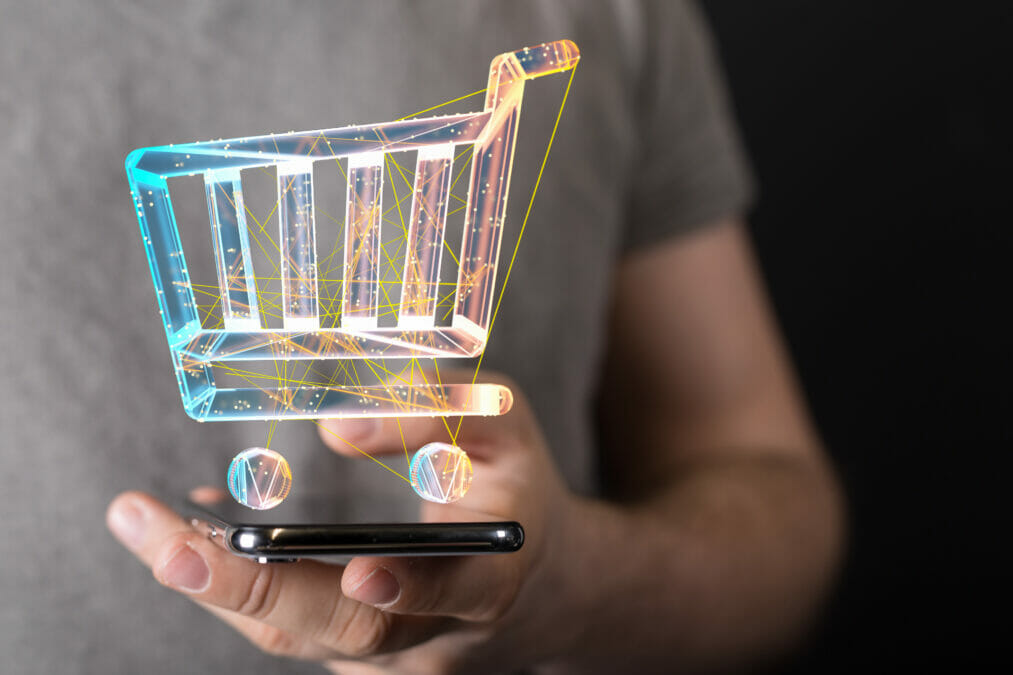The pandemic has forced a shake-up of the retail industry, and 2021 saw some radical changes in sales models, with traditional in-store retailers adopting digital apps and clienteling to offer a hybrid in-store and digital presence. This created an innovative digital impact on the consumer experience and brought back the human touch of ‘in-store’ assistants to support the sales process. The chasm of customer service standards has widened, with those organisations which embraced digital transformation outclassing others who have retained their existing business models. 2022 may be the year for retail brands left behind to pay the price for holding back on innovation, and invest in digital technologies.
Innovative retailers have been pushing the boundaries of technology’s potential to deliver an omnichannel digital customer experience, and we predict that this digital revolution in retail will step up a gear next year. Meanwhile, consumer lifestyle, behaviours and values have continued to evolve, to include a buyer’s increasing sense of purpose, community and ethical responsibility. It will be critical in 2022 for retailers to have a strong business purpose which is aligned to a greater social belief, customer lifestyle value, or environmental cause than its core products and services, which creates an emotional link between the brand and its consumers.
Three sectors primed for a digital commerce revolution
Omnichannel all the way
As Gartner has affirmed, omnichannel will be omnipresent. Retailers that woke up to the necessity for connecting all their channels during the pandemic will continue to benefit from the transformation to their business, while those that have yet to commit to evolving the customer experience will find themselves increasingly falling behind.
Data integration is vital
Data integration, harmonisation and intelligent management will become even more vital to retailers wanting to offer exceptional, seamless customer experiences. Integrating legacy, third party and new systems to make the data work for them will be central to their omnichannel ambitions. Delaying or putting integration off won’t be an option, as customer demands increase, and retailers need to become more proactive in meeting their needs.
This means educating retailers and their CXO decision-makers across the board about how quickly and easily they can use what they have already to launch omnichannel services, from clienteling to order management, workflow, and fulfilment.
WIT Summit Canada — establishing hybrid leadership and digital-first customer service
Evolution of the workforce
As diversity and inclusion become central to every business’ recruitment and development strategies, the shape of the workforce will continue to evolve. In retail, as across wider industry, this will mean that all businesses will be expected to have fair, transparent, supportive people policies which will need to stand up to public scrutiny. Retailers will increasingly use people values as a way to differentiate between and select vendors or suppliers to work with. The role of the store associate will continue to be elevated as they grow into their roles as tech-enabled shopping companions, whether they’re in store or doing a virtual consultation.
Improving in-store and online customer experiences in 2022 will involve digital innovation and intelligent data management, to create truly personalised information which is communicated with a higher purpose – all of which is delivered via customers’ preferred channels and part of an omnichannel strategy.
To maintain competitive advantage, retailers will need to implement a future-proof, highly optimised, data-driven and customer-focused solution which can provide exceptional digital experiences.
The rise of the conscious consumer
Over the last 18 months, consumers have asserted an increasing amount of influence over retailers in terms of delivering what matters most to them, at an ethical and environmental level, and how they want brands to treat them. As we move into 2022, it will no longer just be about sizing and availability of products and services. Retailers’ values will matter more and more, and their ability to offer additional information to facilitate more ethical trading decisions will be critical. Delivering on this 360-degree customer service proposition will make the difference between customers choosing them and a competitor.
The rise of the conscious consumer, concerned with sustainability, diversity and responsible business practices, means that retailers will need to ensure that their values chime with their target customers. As far as retailers’ customer service models are concerned, we’ll see the need for a hybrid digital experience. This means offering a digital customer service which is supported with real-time customer service store associates, with all the information they need at their fingertips to prove the status of ethically-made products and reassure customers – something only the right in-store tech can make happen.
Responsible Tech Series 2021 Part 1: exploring ethics within digital practices
Key 2022 retail tech trends
While shopping in store will become increasingly popular as customers become more confident, some innovations that came about during the pandemic will become a permanent part of the shopping experience:
- Personalisation and shopping by appointment, where the store associate knows the customer, their wants/needs and is able to look after them throughout the shopping journey, owning the relationship (and thus any sales commission) online, in-store and beyond. The challenges for retail brands to truly personalise their store, according to changes in consumer needs and preferences, are real.
- Click and collect/BOPAK will become even further embedded into the seamless shopping experience because customers expect to be able to pick up their purchases at their convenience, meaning stock management and inventory will become even more essential to efficient store operations, especially when there are challenges to the supply chain.
- Virtual consultations as an extension of clienteling. Customers want to be able to shop on their own terms, and sometimes that means from the comfort of their living room rather than in a store. Retailers will need to be able to facilitate this over the long term, and that means ensuring their virtual services are able to integrate both new and existing customer data – simply offering a top-layer video call with no data behind it will not be fit for purpose.








